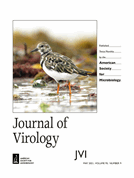INTRODUCTIONThe ability of HIV-1 to persist within infected cells as an integrated provirus, even during suppressive antiretroviral therapy (ART), represents the main barrier to achieve ART-free HIV remission or cure (1, 2). Various strategies to inactivate or eliminate latent viral reservoirs have been proposed, many of which involve approaches to modulate proviral expression (1, 3). Like most cellular genes, latent HIV-1 proviruses produce stochastic transcripts through transcriptional noise (4, 5), and there is further speculation that such transcripts may contribute to HIV reservoir maintenance in individuals receiving ART (4). Consequently, it has been proposed that therapies capable of durably suppressing basal stochastic expression might allow treatment to be removed without the risk of viral rebound. This rationale is the basis for the HIV remission strategy known as “block and lock,” where intervention would be applied to durably suppress basal and stochastic provirus expression (6 – 8). Much focus toward this objective has centered on the viral Tat protein, which binds the nascent TAR RNA and recruits P-TEFb, containing CDK9 and Cyclin T1, which phosphorylates proteins at the core promoter to encourage transcriptional elongation by RNAPII (9). Inhibitors of Tat block the positive feedback effect caused by this factor in cells producing basal provirus transcripts (10, 11). Additional potential block and lock targets under current investigation include factors required for transcriptional initiation or elongation, including inhibitors
CDK8 inhibitors antagonize HIV-1 reactivation and promote provirus latency in T cells

